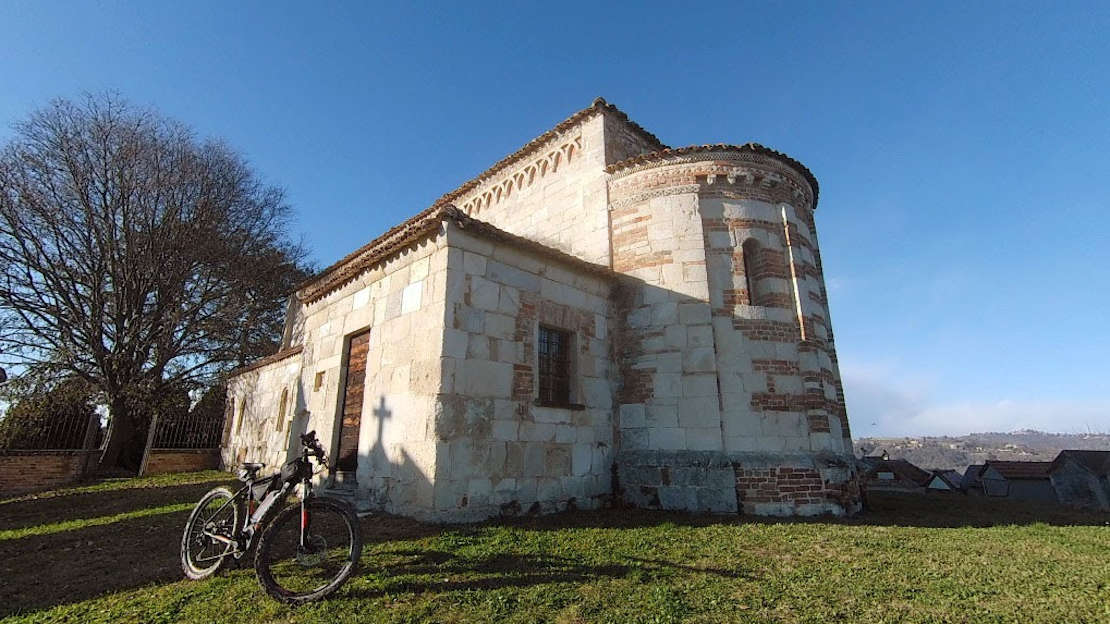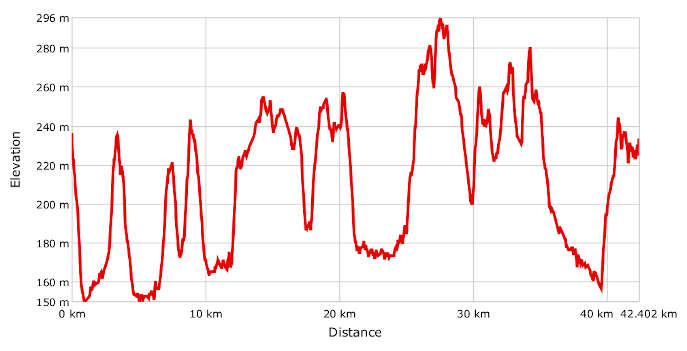
- Bike: trekking/mtb
- Difficulty: ***
- Distance: 45 km
- Altitude difference: 146 m
- Total ascent: 840 m
- Total descent: 842 m

Historic Romanesque churches can be found in the hills of the Asti area. It’s precisely in Alto Astigiano that we find this medieval religiosity epitomised. Easy to reach from Asti, Turin and Lombardy, this area is characterised by a harmonious blend of landscape and colour. Rows of vines for fine wine production prevail, as does a series of churches in varying sizes and degrees of isolation. Most of these buildings are smaller, simple structures built with humble materials available in situ. They feature alternating colours that bind it all together: brick red and pietra cantone yellow (sandstone). The colours derive from the materials they are made of, which often give rise to characteristic decorations.
A trip spent looking for these physical testaments to the past is a great way to experience the charm of this area.
80% of the proposed route is on dirt roads in the Valle Versa and little adjoining valleys, so you may well come across mud in rainy periods. On sunny days this is a really fun route to take, even if you’re not particularly interested in Romanesque architecture.
Start from Castell’Alfero with a visit to the parish church of Santi Pietro e Paolo – which contains a wooden statue of the Madonna del Rosario and an organ made in the 17th century – and the church of the Confraternita dei Battuti.
Begin cycling following signs for the shrine to the Madonna della Neve. Built in the Romanesque style, it features a circular-section bell tower, unique in the area and rather rare among Romanesque bell towers generally. The isolated church emerges at a pass on the ridge of the hills that run along the right-hand side of the Versa river. Continue on the track towards Frinco and the country church of Santa Maria di Aniceto in the village of Corsione. This ancient little country church was probably built on pre-existing Roman foundations. It sits on top of a hill and is encircled by vineyards. Follow the GPX track on tarmac and dirt roads to Colcavagno, a hamlet in Montiglio Monferrato. Here, inside the cemetery, you can visit the church of Santi Vittore e Corona, a structure that dates to the Carolingian Renaissance. The route continues towards the hamlet of Scandeluzza. A trip to the cemetery here allows you to see the church dedicated to Santi Sebastiano e Fabiano, built in 427, consecrated in 429 and restored in 1676, as per the two plaques on the walls. Get back on your bike and head in the direction of Murisengo for a few metres, then turn left for Montiglio Monferrato. This is home to the church dedicated to San Lorenzo, which features Romanesque architecture of considerable interest and can be accessed from the cemetery. Continue for about 7 km in the direction of Montechiaro d’Asti. Just before the village, at the top of the hill, is the Romanesque church of Santa Maria Assunta Pisenzana, the parish church of 907 built before Montechiaro was founded. The cemetery alongside it was abandoned in 1894.
Set off again for the church of Santi Nazario e Celso. This is set about 2 km apart from the residential area and surrounded by trees, where the now vanished village of Mairano once stood. It’s one of the most important works of Romanesque architecture in the Asti area, dating to the 11th century and made from brick and sandstone. Once again on your bike, head for Montechiaro d’Asti then towards Villa San Secondo where you’ll find the 18th-century church of Santi Matteo e Secondo. Carrying on from there, you will shortly reach Corsione where you can see the 15th-century church of San Cristoforo. Keep on towards Callianetto on the SP 36, a modest road with little traffic, until you reach the starting point of Castell’Alfero.
